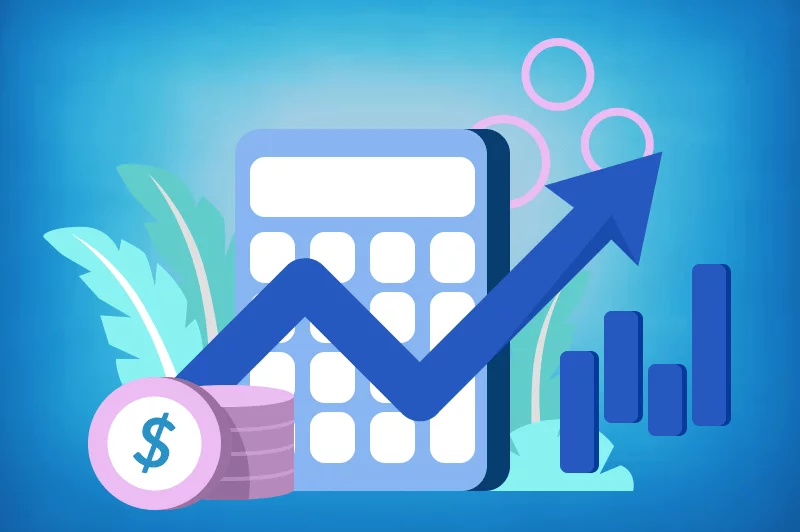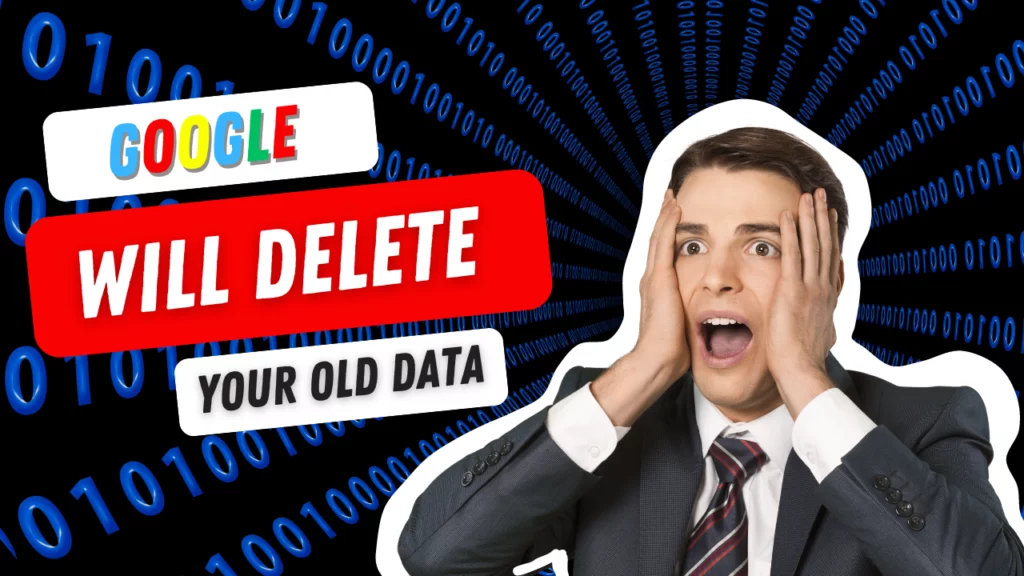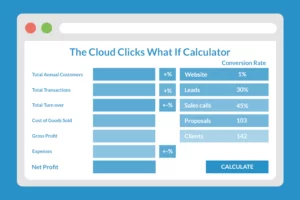Maximising ROI for social media advertising campaigns is a crucial aspect of any successful social media marketing. In today’s digital landscape, businesses must effectively leverage various social platforms to reach their target audience and achieve desired results. This blog post will provide valuable insights into creating high-performing ad campaigns that generate impressive returns on investment.
We’ll begin by exploring the fundamentals of social media advertising, including its benefits and the different types of ads available across popular social media platforms. Next, we’ll delve into setting clear goals and objectives to ensure your efforts are aligned with your overall business vision.
Building on the fundamentals of social media advertising, we will progress to creating an effective ad campaign through audience research and messaging optimization before optimizing ads for maximum ROI. Additionally, we will discuss strategies for optimizing your ads to maximize social media ROI through testing variables, tracking performance metrics, and making necessary adjustments as needed.
Lastly, this post will highlight best practices such as utilizing automation tools and leveraging targeted audiences while regularly re-evaluating strategies to stay ahead in the ever-evolving world of social media marketing.
1. Understanding Social Media Advertising
Social media advertising has become an essential component of modern marketing strategies for businesses looking to expand their reach and increase revenue. Social media gives you an avenue to generate revenue. With this in mind, we will delve into the fundamentals of social media advertising and its advantages, as well as explore the various types of ads available on different platforms.

a. What is Social Media Advertising?
Social media advertising refers to the process of creating and publishing paid promotional content on popular social media networking sites such as Facebook, Twitter, LinkedIn, and Instagram. These ads are designed to target specific audiences based on factors like demographics, interests, behaviors, or location to drive engagement with your brand’s products or services.
b. Benefits of Social Media Advertising
- Increase Brand Awareness
By reaching a wider audience through targeted ad campaigns, you can effectively raise awareness about your brand among potential customers who may not have discovered it otherwise. - Better Targeting Capabilities
Social media platforms offer advanced targeting options that allow you to focus your ad spend on users who are most likely interested in what you’re offering. - Faster Results
Unlike traditional marketing methods like print or television advertisements which require time for production and distribution before seeing results; social media advertisements can be created quickly and start generating leads almost immediately after being published. - Easily Measurable ROI
With detailed analytics provided by these platforms, tracking the performance of your ad campaigns and measuring their return on investment (ROI) becomes a straightforward process.
c. Types of Social Media Ads
Ads for social media can be chosen depending on your objectives, demographic, and budget. Common types of social media advertising include sponsored posts, display ads, video ads, carousel ads, and influencer marketing.
As social algorithms continue to update, organic content proportionally demands the need to be able to reach the majority of your target audience. Not only are you expected to put out fresh content regularly, but also to always be “on” for your followers.
Creating multiple social media ad formats can help reach and engage with your target audience. it’s important to test different campaigns and ad formats to see what works best for your business.
Choosing the right ad format is part of a social media strategy. Making it creative is crucial for the success of your paid social media campaign.
- Image Ads
These are static visual advertisements accompanied by a caption or call-to-action button to encourage user engagement. - Video Ads
Short video clips or engaging video content showcasing your product or service with the goal of capturing users’ attention and driving them to take action. - Carousel Ads
A series of images or videos displayed in a single ad unit, allows advertisers to showcase multiple products or tell a story using sequential content. - Sponsored Posts/In-Feed Ads
Paid promotional content is designed to blend seamlessly into users’ newsfeeds for an organic feel while still being marked as sponsored material. - Influencer marketing
Business owners collaborate with an individual who has a large number of followers on social media. These individuals will be asked to promote a brand or service on their social media posts.
Collaborate only with an influencer whose personality is in sync d with your brand identity and values.
Realizing the potential of social media advertisement and ad format is an essential part of constructing a fruitful ad campaign. Establishing objectives will assist you in gauging how successful your activities are.
2. Setting Goals and Objectives
To maximize ROI for your social media advertising campaigns, it is crucial to set clear goals and objectives from the outset. This will not only help you measure success but also guide your campaign strategy.

a. Defining Your Goals
Define your goals: Before you start your social media marketing campaign, define your goals. Start by determining the objectives you seek to accomplish through social media advertising.
Common goals include increasing brand awareness, driving website traffic, generating leads or sales, and boosting engagement on specific posts or platforms. These goals must align with your overall business objectives so that they contribute meaningfully to growth.
Here are some common social media advertising goals:
1. Boost brand awareness: Increase your brand’s visibility and reach by promoting your products/services to a broader audience.
2. Drive website traffic: Encourage users to visit your website and engage with your content. Engage your audience For social media marketing to be successful and to accelerate the process of lead generation
3. Generate leads: Collect user information, such as email addresses or phone numbers, to build a database for future digital marketing campaigns. Keep in mind, without engagement, there is no lead generation!
4. Increase sales: With the use of effective social media strategies, you can encourage clients to patronize your brand. This will lead to increase sales and return of investment.
b. Establishing Your Objectives
Once you have defined your overarching goals, break them down into measurable objectives using key performance indicators (KPIs). For example:
- If your goal is to increase brand awareness, a relevant KPI might be the number of impressions or reach of an ad campaign.
- If driving website traffic is the aim, then clicks-through-rate (CTR) would be an appropriate metric.
- To generate leads or sales effectively track conversions as a primary objective.
- For boosting engagement on specific posts or platforms monitor metrics like comments per post ratio and shares per post ratio respectively.
Social Media Examiner provides more examples of potential KPIs for different types of marketing campaigns here.
c. Measuring Success
An essential aspect of setting up effective social media advertising campaigns is tracking progress against predefined objectives regularly in real-time analytics tools such as Google Analytics (Google Analytics) or Facebook Ads Manager (Facebook Ads Manager).
By monitoring performance, identifying areas for improvement, and making data-driven decisions, you can optimize ROI.
The key to success lies in not only establishing specific objectives but also consistently gauging progress against them. By doing so, you can ensure your social media advertising campaigns are on track to deliver maximum return on investment.
Focusing on vanity metrics will not help improve your ad’s performance. Your goals should be the center of your social ads as you keep an eye on conversions and URL clicks.
Establishing aims and ambitions is an integral element of any victorious digital marketing strategy, enabling you to evaluate your advancement toward attaining the intended outcome. Careful study of the intended demographic and suitably constructed communication for each platform are essential components in constructing an efficient ad campaign.
Experiment with ad placements: Test different ad placements, such as news feeds, stories, or in-stream ads, to see where your ads perform best. Success with paid advertising requires ongoing optimization, testing, and monitoring.
3. Creating an Effective Ad Campaign
To maximize the ROI of your social media marketing, it’s crucial to create effective and engaging ads that resonate with your target audience. In this section, we’ll discuss how to research your audience, craft the right message, and choose the best platforms for maximum reach.

a. Researching Your Target Audience
Uncovering the target group is a crucial initial move in designing effective social media marketing. Start by conducting thorough audience research, which includes identifying demographics such as age, gender, location, interests, and online behaviors of your ideal customers.
- Create buyer personas
Develop detailed profiles of your ideal customers based on their characteristics and preferences. The initial step is to recognize precisely who you’re trying to target with your social media marketing efforts. The next step is to match your customer personas with the appropriate social media sites.
Research your ideal customers and identify their demographics, interests, and pain points. You may use data from website analytics, social media insights, and customer feedback to build a customer persona that will help you better understand your target audience’s needs. - lookalike audiences
Use social media platforms’ algorithms to find users who resemble your existing customers. You can also create lookalike audiences and define your audience’s behaviors and activities, interests, and demographics. Facebook Ads Manager will aid you in creating a lookalike audiences that have similar traits and characteristics to your ideal user. - Analyse existing data
Use insights from past campaigns or website analytics to understand what resonates with your current customer base. Measuring ROI is essential for evaluating the success of your paid social media campaigns. - Retargeting
- Target users who have interacted with your brand before, such as visiting your website, engaging with your social media ads, or adding items to their cart but didn’t make a purchase.
- Monitor competitors
Keep track of competitors’ strategies and messaging for inspiration or differentiation opportunities.
b. Crafting the Right Message
The key to crafting a compelling message to make the most or your social media marketing is understanding what motivates your audience and addressing their needs directly through relevant content that highlights benefits rather than features alone:
- Showcase value
Emphasize how using Cloud Clicks will benefit potential clients by solving problems they face or enhancing their lives in some way. - Tell stories
Share success stories from satisfied clients or use case studies as proof points that demonstrate tangible results achieved through digital marketing services provided by Cloud Clicks.
Connect with your audience and make a lasting impression by leveraging the power of storytelling. - Use clear calls to action (CTAs)
Encourage users to take the desired action by using direct, concise language that tells them exactly what you want them to do next. Examples include “Sign up now,” “Request a demo,” or “Learn more.”
C. Choosing the Right Social Media Platforms
Selecting the most suitable social media platforms for your advertising campaign depends on factors such as where your target audience spends their time online, which platforms align best with your business goals, and budget constraints.
Not all social media platforms are created equal. Different platforms cater to different audiences, so choosing the right platforms that align with your business goals and target audience is important.
Promote these new shopping features on your social posts once you’ve set them up. Integrating your product catalog into your social profiles is also vital.
With billions of people using social media platforms daily, advertising on these channels has the potential to generate significant returns on investment (ROI). Knowing your objectives will help you choose the right social media platform, audience targeting, and ad format.- Facebook: With over 2.8 billion monthly active users worldwide, allowing people to connect globally through social media contents in a form of images, videos, articles, and discussions. It is one of the most widely used social media platforms for all ages.
The cost of Facebook ads depends on several variable factors, including audience targeting, ad placement, campaign duration, the competitiveness of your industry, time of year, location, and time of day.
Facebook offers a number of ways to create a custom audience in the Facebook Ads Manager. - Instagram: Owned by Meta, Instagram has over one billion active users and focuses on visual content. It’s an excellent platform for businesses with visually appealing products or services
- Twitter: With over 330 million monthly active users, Twitter is a great platform for businesses that want to promote their brand in real-time and engage with their audience.
- LinkedIn: Connects the world’s professionals to make them more productive and successful. This is a good avenue for influencers, leaders, and innovators.
- Pinterest: This is most commonly utilized for scrapbooking and most of its users are females. Posting striking images and videos will help catch the user’s attention and encourage engagement.
- YouTube: This platform boasts of its 2.3 billion users which include even those without an account registered. It is dominantly one of the platforms that are also used as a search engine for videos on ” how to do” and a lot of stuff.
- TikTok: This is one of the best visual-based platforms for your short clip ads. Since it has a young demographic of users. It is best for brands whose target is teens and young adults.
Choose the social network to ensure that your effort and resources are well invested. Whichever social media platform you are advertising through, follow platform best practices and everything is properly set up through tracking pixels.
Get the most out of your investment by including the right tactics in your social media strategy. Use social media scheduling tools if you don’t have the bandwidth to manage the timing of your posts.
AI algorithms can analyze user data and determine which topics, ad formats, content, and messaging are most likely to be successful for a particular brand. AI-powered social media advertising helps brands target their desired audience more effectively and maximize their ROI.
Social media management tools will help you organize your posts. There are AI tools that will help you create good content as well as recommend the best schedule for it to be posted.
Consistency includes all aspects of your social presence such as what and how often you post, and even how your brand is represented by your retailers. This means you don’t have to be online when posting content, saving you time and effort.
Competitive Analysis AI can help brands analyze their competitors’ social media campaigns. AI algorithms can analyze user data and determine which strategies work for your competitors.
AI can help automate processes that would otherwise take a lot of time and effort. This helps brands save time and resources, allowing them to focus on other aspects of their business.- There are 3 simple ways to use AI on your social media posts.
- Facebook: With over 2.8 billion monthly active users worldwide, allowing people to connect globally through social media contents in a form of images, videos, articles, and discussions. It is one of the most widely used social media platforms for all ages.
- Create social media content
There are available AI tools that will help you create effective social media content in a form of blog posts or videos. It may not literally create the whole posts but it will give you a highly recommended outline and flow of the ads.
Lately is an AI tool that is commonly used for Twitter. It will not just generate recommended content but it will also give you an idea of when is the best time to post it.
For your blog posts and website content, AI tools for writing like ChatGPT, SurferSEO, and Jasper AI will help create optimized content that improves the posts’ performance in the search engine results ranking.
Optimize your social media advertising
Here are some tips for optimizing your paid social media campaigns:
A/B testing: Test different ad creatives, audience targeting, and ad formats to see what works best for your brand.
Adjust your budget: Allocate more budget to high-performing campaigns and pause or adjust underperforming ones
Refine your targeting: Continuously refine your audience targeting based on your data insights to reach the most qualified
Once you have created your content, you may then utilize AI tools like Phrasee to analyze how weak or strong the content is by pulling some previous data such as email and other social media posts.
Pattern 89 is also an AI tool that will provide some recommendations on your target audience and budget. This will help you optimize your ads to reach gain a remarkable performance.
Wordstream is an AI that is particularly used for PPC on Facebook and Instagram. It will analyze the performance of your ads and provide you with helpful suggestions to improve its effectiveness.
Monitor and manage social media channels
There are available AI tools that will help you improve its content, manage your social media ads, and schedule. They can generate an advanced audience insight into your posts to give you an idea of how effective your posts will be.
Socialbaker and Cortex are one of the most popular AI tools that can provide this kind of service. Results will be shown on a dashboard and they will also provide some recommended topics, colors, images, and themes based on its analysis. These themes can help you become more consistent and zero in on a content strategy that makes sense
E. Responsive mobile device posts
The majority of your audience nowadays will be using a mobile phone rather than a desktop. It is very vital that your posts can be viewed clearly on all types of mobile devices.
Optimize for mobile Unless you specifically target only desktop device users, the majority of the impressions or clicks you receive will be from mobile devices. Mobile phones are very handy to use which makes them very accessible to your target audience to use. Giving importance to this aspect will help create a bond and engagement between your brand and your target audience.- F. Measure your ROI
Return on investment can be analyzed in different ways. The result of the analysis plays a vital role in the performance of your paid social media campaigns. Many paid social media campaigns do not maximize their return on investment because of poor or incomplete optimization, limited distribution, incomplete tracking, and undefined goals.
Here are some tips for measuring ROI: - Define your KPIs: Identify the key performance indicators that align with your marketing goals, such as website traffic, lead generation, or sales. Reviewing your brand’s objectives and goals will help you know if you achieved each of them.
- Track conversions Use tracking pixels or conversion tracking to monitor users’ actions after interacting with your ads. Monitor your viewer’s activities if your ads were able to persuade them to purchase your product or service.
Conversion tracking Conversions are of paramount importance for e-commerce stores. You may also track User-generated content, or UGC, which is a form of content that’s created by real people to promote your brand. This includes written ratings and reviews, photos, videos, and even audio that your brand’s customers, followers, ambassadors, or even employees create and share across social and other digital platforms - Analyze your data: Use social media analytics tools to analyze your ad performance, identify trends, and optimize your campaigns for better results of your paid social media campaigns. A number of small improvements can greatly impact the success of a paid social media campaign.
With the help of AI tools, you will be able to evaluate the performance of your ads and how they made an impact on your potential customers.
In conclusion, social media advertising is a powerful tool for businesses to reach their target audience and achieve significant returns on investment. Knowing this information will help you create content that resonates with your audience and increase engagement.
Remember to define your goals, know your audience, choose the right platform, use high-quality visuals and ad copy, and test and track results to get the most out of your social media marketing.
Whether you’re a small business or a large corporation, an effective social media marketing strategy can help you reach your business goals and increase your revenue.
For your digital marketing consultation and social media marketing strategy needs, contact CLoudClicks. They will help you materialize your goals and objectives for your brand. This will be your first step on your road to success. Contact them today.
- F. Measure your ROI







